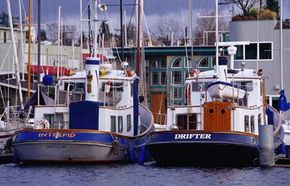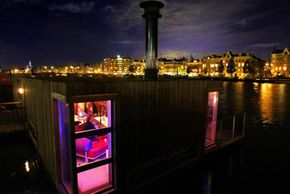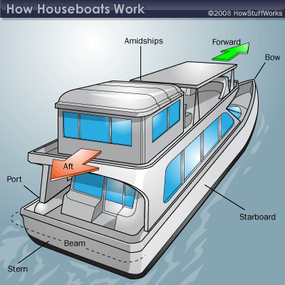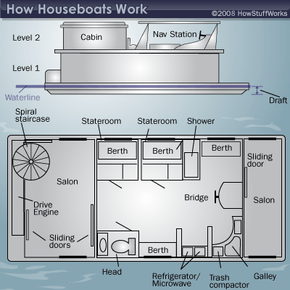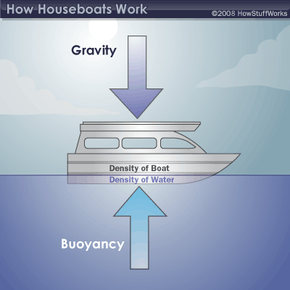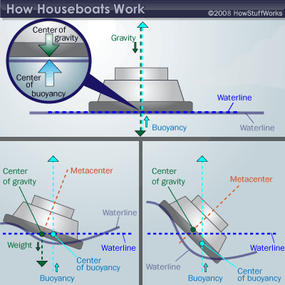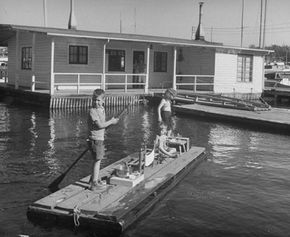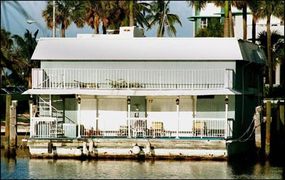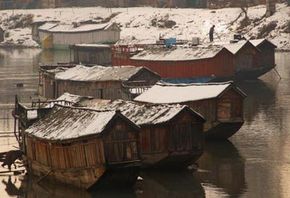The weather forecast predicted a comfortably warm day, so you decide to wake up early and enjoy as much of the weekend as possible. With a yawn and a stretch, you rise up around seven and begin your daily activities. After you take a refreshing shower, brush your teeth and complete your morning exercises, a pot of coffee and a hearty breakfast of scrambled eggs and bacon are just enough to invigorate you. Stepping outside into the fresh air, you exit your home onto the starboard side, walk forward and admire from the bow the rising sun -- you are, of course, emerging from your very own houseboat.
Advertisement
Human civilization has always thrived close to the water. Entire societies typically crowd along major rivers, which provide easy access to travel and trade. And there is no doubt that most people love the sea -- just visit a beach during the spring and summer seasons and you'll see our deep connection to the water.
But if life at a beach house just isn't close enough to the water, a houseboat can get you even further off land and into a different lifestyle. Houseboat ownership is a relatively small sector of the housing market. Of the 12.7 million boats registered in the United States in 2006, about 6.9% are registered for commercial use [source: Center for Competitive Analysis]. Compared to the more than 126 million households on land, houseboating isn't the most common way to live.
Living onboard a houseboat is much different from living in a city or suburb, and the people who live in them -- commonly referred to as "liveaboards" -- must make certain sacrifices and lifestyle changes to make living above water work. From the sleek and expensive to the small and modest, houseboats offer to some a romantic lifestyle right on top of the water.
But what exactly is a houseboat? What makes it different from other vessels like yachts or pontoons? What about the rules and regulations of houseboating -- are they any different from other kinds of boats? And just how does a bathroom work on a houseboat? To learn about houseboats, set sail (or lazily float, or however you wish to enjoy this maritime article) to the next page.
